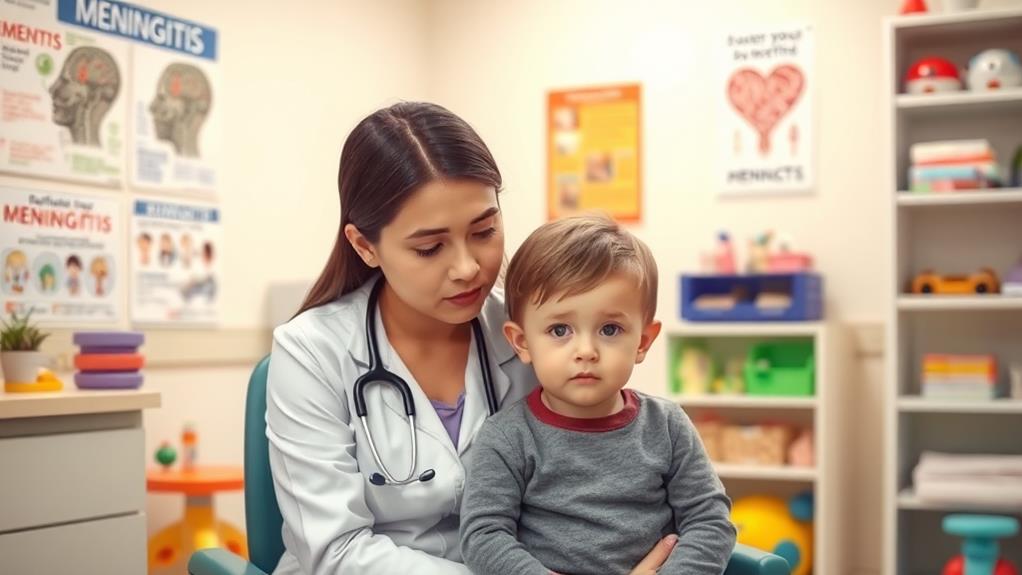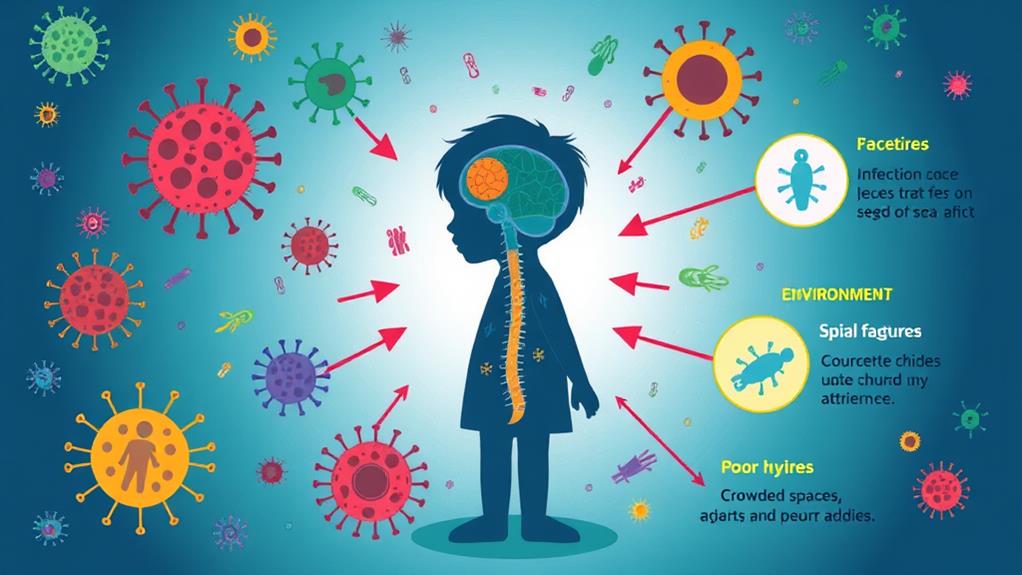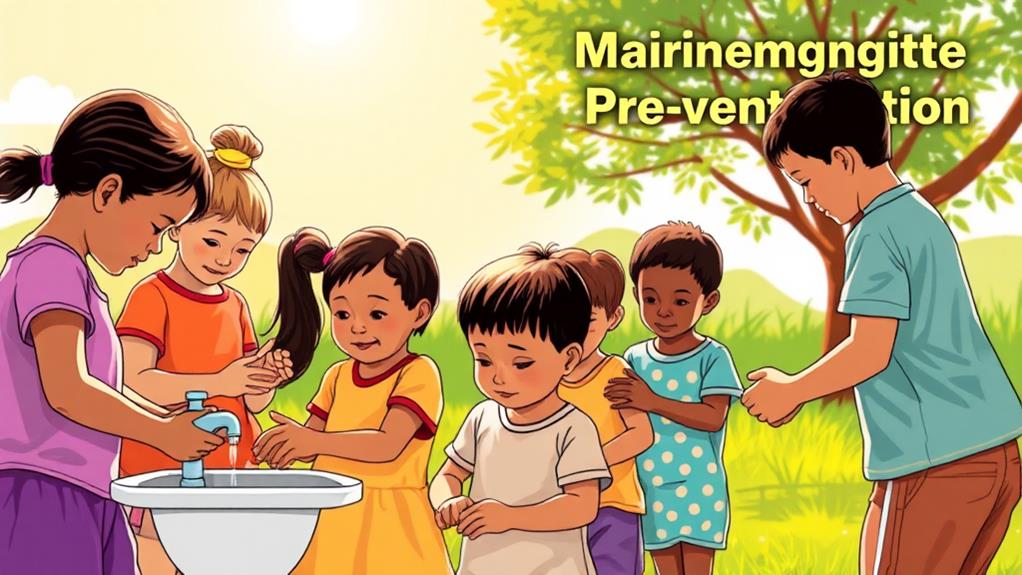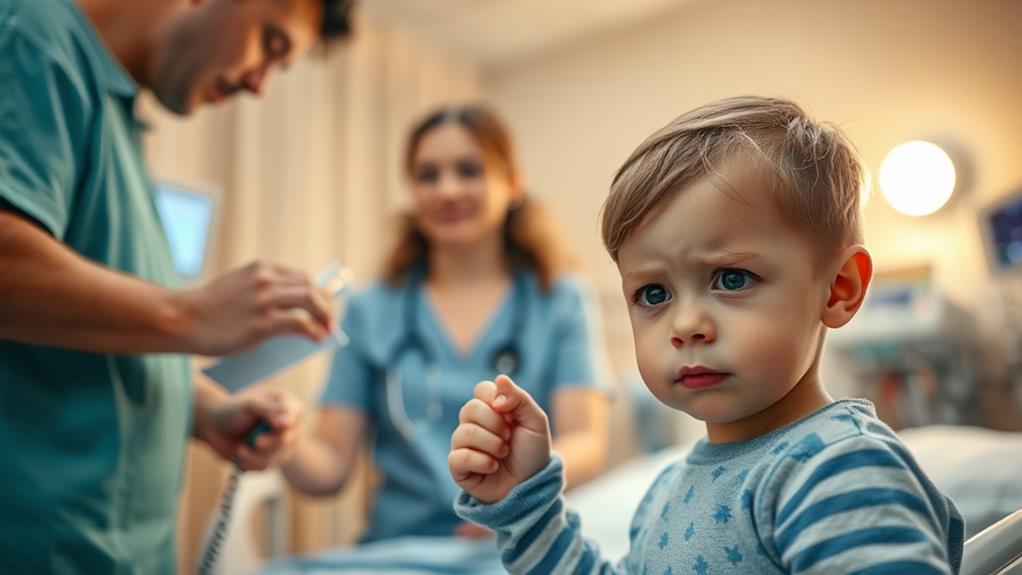When it comes to meningitis in kids, understanding the symptoms and causes is crucial for any parent. You might notice signs like fever, irritability, or a stiff neck, which can be alarming. Bacterial meningitis can escalate quickly and requires immediate action, but viral forms are often less severe. Knowing the right treatment options and preventive measures can significantly impact outcomes. So, what should you keep an eye out for, and how can you protect your child from this serious infection? The answers may surprise you.
Understanding Meningitis

Meningitis is a serious infection that affects the protective membranes around the brain and spinal cord. If you think about it, that's pretty important stuff! This infection can be caused by a few different things, but the two main types are bacterial and viral.
Bacterial meningitis is the more severe one and needs immediate treatment, while viral meningitis usually gets better on its own.
In children, meningitis can show some pretty alarming symptoms. You might notice a fever, a headache, or a stiff neck. If you've got a little one, keep an eye out for irritability or even a high-pitched cry in infants. It's not just a sniffle that you can ignore!
To diagnose meningitis, doctors often do a lumbar puncture, also known as a spinal tap. They check the cerebrospinal fluid for infection and run some blood tests.
Fortunately, there are vaccines available for certain types of bacterial meningitis, like those caused by Streptococcus pneumoniae and Neisseria meningitidis. Getting your kids vaccinated can help keep them safe from this serious infection.
Identifying Symptoms
Recognizing the symptoms of meningitis in kids can be challenging, especially since they can mimic other illnesses. You might notice a fever that comes on quickly, along with a severe headache and stiff neck. These meningitis symptoms can develop rapidly, sometimes within just a few hours or days.
For infants, watch for signs like a high-pitched cry, irritability, vomiting, and a bulging fontanel, which is the soft spot on their head. As the illness progresses, you may see sensitivity to light and confusion, which are big red flags that mean it's time to seek emergency care.
Other common symptoms include poor appetite, drowsiness, and chills, making it easy to mistake them for a simple flu. If you notice a combination of these symptoms, especially with a sudden change in behavior or consciousness, don't wait! It's crucial to act quickly.
Causes of Meningitis

Several factors can lead to meningitis, with infections being the most common culprits. When we talk about bacterial meningitis in children, it's often caused by bacteria like Streptococcus pneumoniae and Neisseria meningitidis. These bacteria can cause severe illness, making it super important to watch for signs and symptoms early on.
Viral infections are another common cause of meningitis, but don't worry too much; these usually result in a milder illness that the body can handle on its own. Infants, children, and teenagers are particularly vulnerable because their immune systems are still developing. That's why routine vaccinations are essential—they help protect against those nasty bacteria!
Sometimes, meningitis usually occurs when bacteria or viruses spread from other infections in the body, like those pesky ear or throat infections. Rarely, parasitic infections or even head injuries can lead to meningitis too.
If bacterial meningitis is diagnosed, treatment with antibiotics is crucial to fight off the infection. So, if you notice any unusual signs and symptoms, don't hesitate to reach out to a healthcare professional! Your health is no laughing matter, but staying informed can help keep the giggles coming!
Diagnosis and Treatment
When it comes to identifying meningitis, healthcare professionals rely on a variety of diagnostic tools. One of the most important is a lumbar puncture, or spinal tap, which helps analyze cerebrospinal fluid. This fluid provides critical information about the type and severity of the infection.
They might also run blood tests and imaging scans, like CT or MRI, to check for any complications.
If bacterial meningitis is diagnosed, immediate treatment is key. Your child may receive intravenous antibiotics to fight off the infection. The specific antibiotic used will depend on the bacteria causing the problem.
Along with the antibiotics, corticosteroids may be given to reduce inflammation and help prevent complications.
During treatment, doctors will keep a close watch on your child's vital signs and neurological status. They'll want to make sure everything is stable.
Plus, they'll provide supportive care to help with those pesky symptoms like fever, headache, and irritability.
Prevention Strategies

Meningitis prevention starts with your child's daily habits and routines. First, make sure they practice good hand hygiene. Washing hands with soap and water often can help prevent infections. You can even make it fun by singing a silly song while they scrub!
Next, avoid sharing personal items like toothbrushes, cups, and utensils. Germs can be sneaky, and sharing doesn't just spread joy; it can spread bacteria that cause meningitis!
Teach your kids about proper cough etiquette, too. Remind them to cover their mouth and nose when they sneeze or cough—no one wants germs flying around like confetti!
Keeping up with vaccinations is super important. Make sure your child gets the MenACWY and Hib vaccines to lower the risk of bacterial meningitis and its complications.
A healthy lifestyle also plays a big role in prevention. Encourage a balanced diet, regular exercise, and plenty of sleep to boost their immune function.

